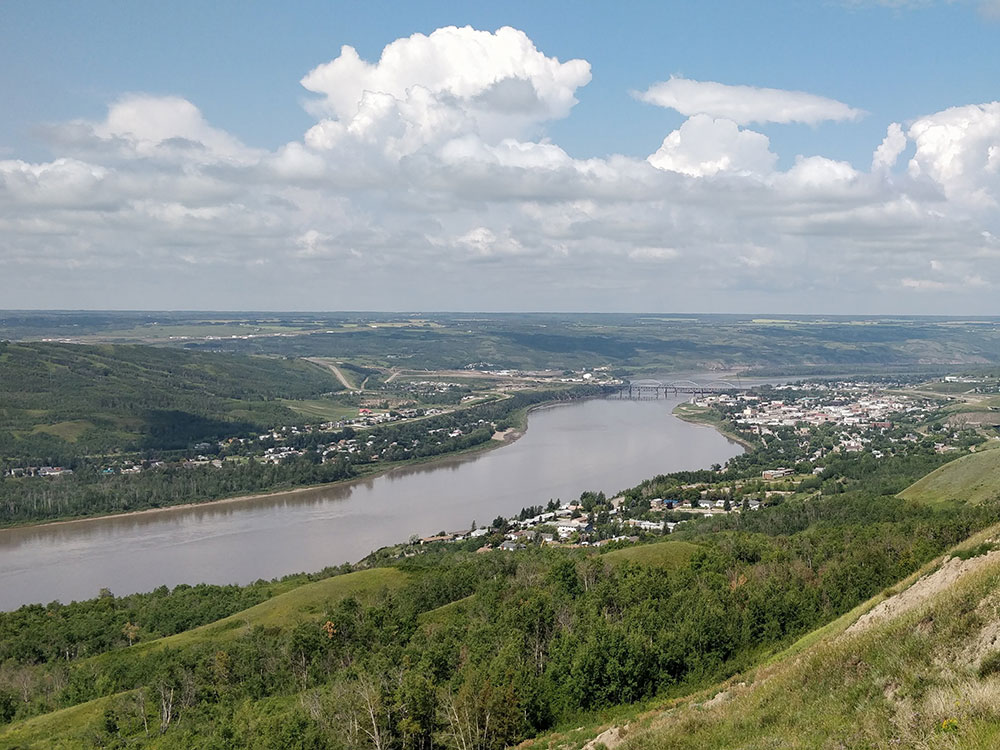When one of the most powerful earthquakes ever recorded in Alberta rocked the Peace River region at the end of November, the province’s regulator waved away concerns it might have been industry-triggered.
Now, after a Stanford University study confirmed those fears, the Alberta Energy Regulator has named Obsidian Energy Ltd. responsible and ordered it to change its practices.
The magnitude of the tremblor, which knocked people off their feet and is one of a string caused by Obsidian Energy, raises big questions.
Some are about the actual risks associated with injecting wastewater underground employed by many other fossil fuel extractors.
But the risk implications go wider, to the vaunted but unproven carbon capture and storage method of collecting carbon emissions from oilsands projects and then storing them beneath the earth indefinitely.
Obsidian Energy didn’t mention any seismic problems in its February corporate presentations despite being under investigation by the provincial regulator since Dec. 22.
Last Thursday the Alberta Energy Regulator belatedly revealed the mid-sized Calgary based company is the owner of a deep wastewater disposal well that the regulator says has triggered 11 felt earthquakes in November 2022 and March 2023 in the bitumen oil fields of Peace River country.
In a Monday statement to the media Obsidian Energy disputed AER’s findings that its disposal well was responsible for the earthquakes. “Since we have not seen any data or other evidence for the AER’s conclusions, we cannot — and do not — agree with these conclusions.”
"The disposal of produced water into subsurface reservoirs is a standard industry practice necessary for the responsible production of hydrocarbons, and the Company’s Water Disposal Well is both approved and licensed by the AER,” said the company’s release. A bevy of companies operate deep injection wells in the region.*
Heavy oil production in the Peace River area generates high volumes of briny wastewater that is reinjected 2,000 metres into the ground.
Researchers have known since the 1970s that such fluid injection can cause severe earthquakes. Recent research has concluded that even shallow injection can cause quakes and that some injecting wells can cause tremors up to 20 kilometres away.
Studies by earthquake experts in Kansas discovered that the cumulative pressure from multiple injection wells by multiple operators over time can change the pressure exerted on basement rock in the ground and cause seismic activity up to 90 kilometres away.
The Alberta Energy Regulator revealed in a March 23 order to Obsidian that it had been monitoring activity at the Obsidian well since December but neither the regulator nor the company told the public about its investigation.
Obsidian directors include former RBC vice-chair
On its website Obsidian boasts that it produces close to 7,000 barrels of oil a day from its Peace River cold well heavy oil operation with “low royalty rates.” Former vice-chair of Royal Bank of Canada, Gordon Ritchie, sits on the company’s board of directors.
The November and March quakes shook homes in Peace River and were felt as far away as Edmonton. The largest recorded quake, 5.6 magnitude, could have caused extensive property damage had it occurred in an urban area, say seismic experts.
Even so it rattled homes, knocked pictures off walls and cracked foundation throughout the municipal district of Peace River.
When Carmen Langer, a local rancher and former oil and gas worker phoned the AER to report the record 5.6 magnitude quake last November, he said a representative denied oil and gas activity had anything to do with them.
Langer argued that industry had extracted too much bitumen and injected too much wastewater to be an innocent player.
“You’re a troublemaker,” Langer said he was told by the AER representative, who said of the most recent and other earthquakes in the region, “I can assure you they are all natural.”
Langer had historical and scientific support for his accusation. The Western Canadian sedimentary basin has a long record of industry-triggered tremors caused by rapid gas extraction, water flooding, deep well injection and hydraulic fracturing.
The regulator claimed that the felt seismic events were too deep to be triggered by industry. However data including detailed wavelength modelling from Earthquakes Canada strongly suggested otherwise.
Shortly after the 5.6 quake, Canadian seismic hazard expert Gail Atkinson, who has extensively studied tremors caused by industry, told The Tyee that industry fluid injection mostly likely triggered the cluster, and she was proven right.
When the regulator didn’t answer questions about what bitumen injection wells or disposal wells were under investigation, The Tyee approached geological engineer Grant Ferguson at the University of Saskatchewan.
Ferguson confirmed that there were scores of bitumen injection wells and deep disposal wells in the area affected by the quakes. The Tyee approached two companies capable of making seismic events, Baytex Energy Corp. and Canadian Natural Resources Ltd., but neither answered our queries.
The AER didn’t change its tune about the quakes until the Stanford study last week identified a deep disposal well at a bitumen operation 40 kilometres south of Peace River as the most likely cause.
The study found that the disposal well owned by Obsidian Energy (formerly Penn West) had injected under great pressure one million litres of wastewater 1.9 kilometres deep into the ground, just 2.3 kilometres from the epicenter of the quakes. The injection started to create small seismic swarms about five years ago leading to the record quake last November and, in early March, more quakes greater than magnitude 4.
The study also identified two other unreported clusters of earthquakes caused by deep disposal wells north and east of the town of Peace River in 2014 and 2019. These seismic swarms had not been identified by the regulator due to inadequate seismic monitoring.
The lead researcher of the Stanford study, Ryan Schultz, told The Tyee that he was not sure how the felt tremors at Obsidian’s disposal well “will affect other disposal wells.” There are scores of them in the region. “Most of the Canadian cases of induced seismicity have been more isolated, in comparison to the American cases that seem to have long-range communication” with other injection wells, he said.
He added that “More seismic monitoring would be helpful to better identify cases like this in the future.”
A challenge to carbon capture plans?
The study also raised serious concerns about public subsidized plans to store vast volumes of carbon dioxide underground in Alberta and B.C. The high cost and high energy process of carbon capture and storage requires liquefying carbon and then injecting it deep into the ground similar to salt water disposal. The researchers warned that CO2 injection could trigger quakes as serious as the one that broke Alberta’s records.
“Ideally, operations would be sited in locations that are remote from critical infrastructure, residential homes and industrial operations — to balance the earthquake consequences with the costs/risks of waste transportation,” warned the study.
Other research has warned that storing CO2 underground is inherently reckless: "Because even small to moderate-sized earthquakes threaten the seal integrity of CO[2] repositories, in this context, large-scale CCS is a risky, and likely unsuccessful, strategy for significantly reducing greenhouse gas emissions."
On March 23 the AER ordered the company to produce in the next 15 days “a plan to reduce the magnitude and frequency of induced seismic events caused by the Disposal Operation,” as well as install more seismic monitoring equipment. The company must also supply the regulator with data on water injection rate, and cumulative water injected data from the well over the last decade.
Allan Chapman, a former senior geologist with the BC Energy Regulator (formerly the Oil and Gas Commission) has repeatedly warned authorities that there are no upper limits on the magnitude of tremors industry can cause and that regulators remain in a state of denial about the growing hazards.
In a recent science paper Chapman called for frack-free zones, a more stringent traffic light system and legislation that requires companies to make their own seismic monitoring public as a condition of operation. Currently, much seismic information in the oil patch is considered proprietary and may not be made public for a year after a quake.
He’s also advocating for an enhanced earth monitoring system that collects more real-time data with a much larger network of seismographs than currently exists.
“Let’s say we get a 5.5 magnitude quake and there are deaths and damages and the Peace River Bridge is underwater,” said Chapman in a 2021 Tyee interview. “And four companies are found to be fracking in the same area at the same time. Having clear and transparent information on these events will help with accountability.”
Such a system would have immediately alerted regulators of the seismic issues in Peace River.
* Story updated on March 27 at 2:16 p.m. to include information from an Obsidian Energy statement released after publication. ![]()
Read more: Energy, Alberta, Environment

















Tyee Commenting Guidelines
Comments that violate guidelines risk being deleted, and violations may result in a temporary or permanent user ban. Maintain the spirit of good conversation to stay in the discussion and be patient with moderators. Comments are reviewed regularly but not in real time.
Do:
Do not: